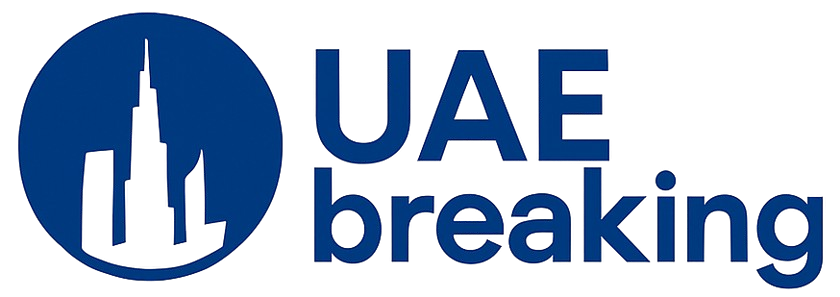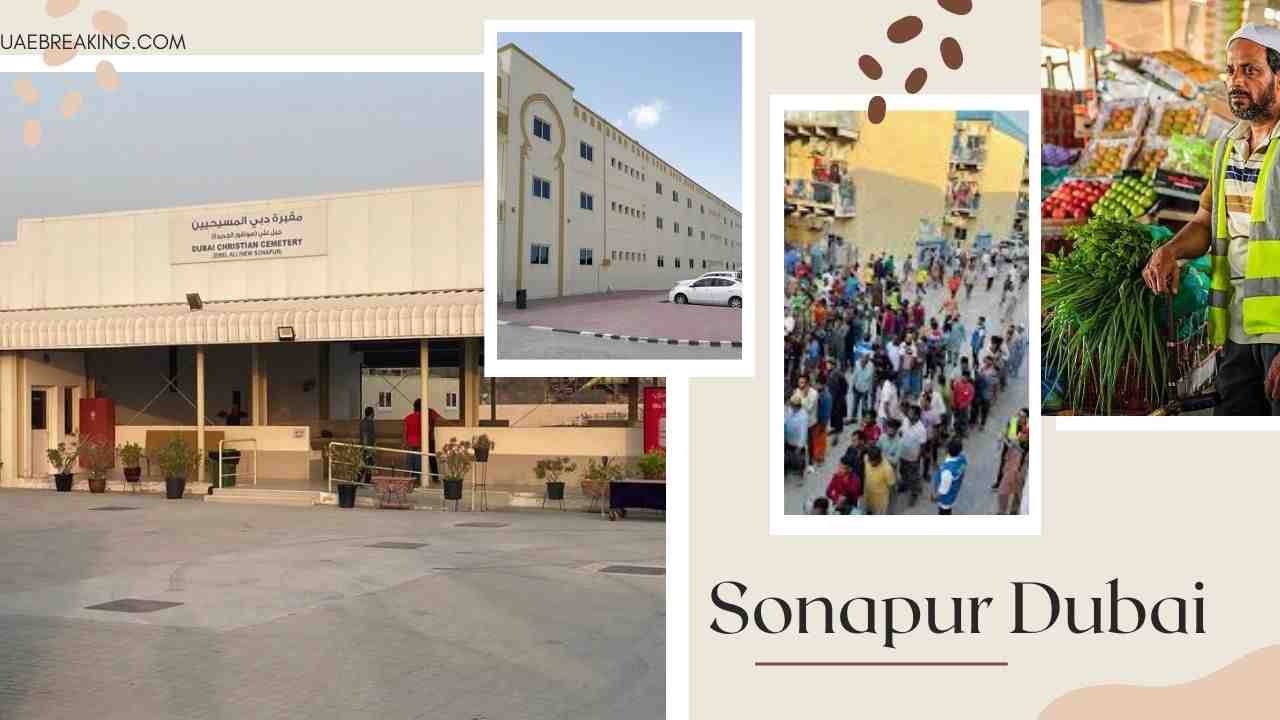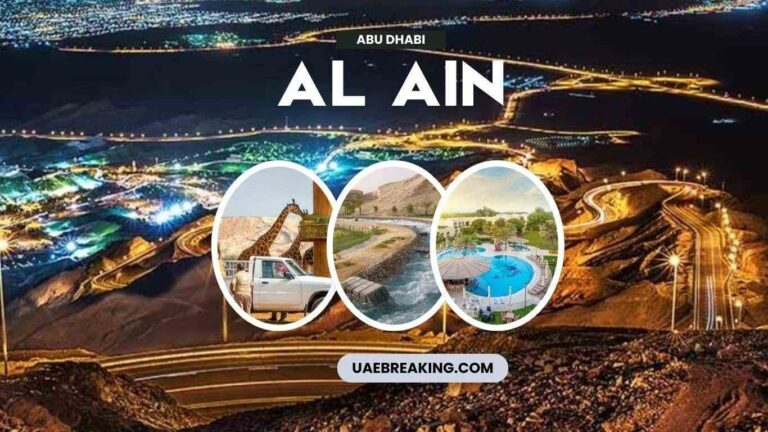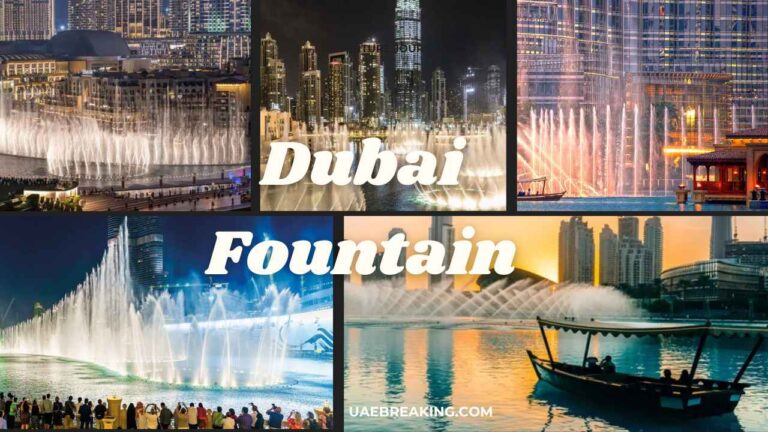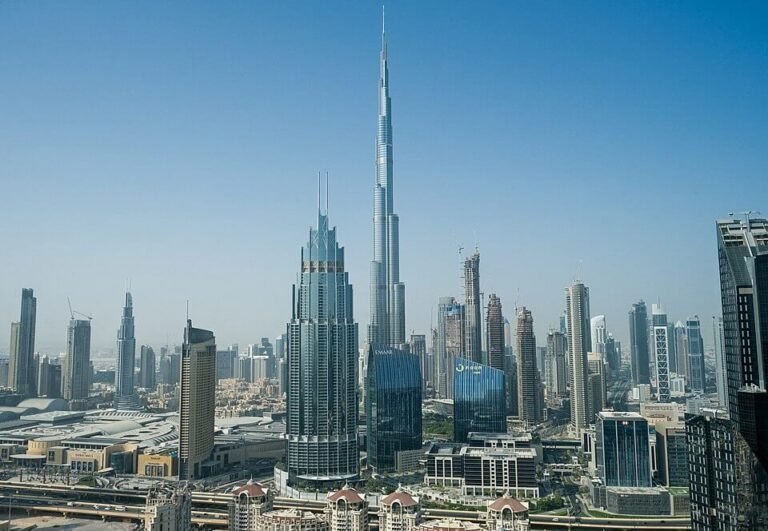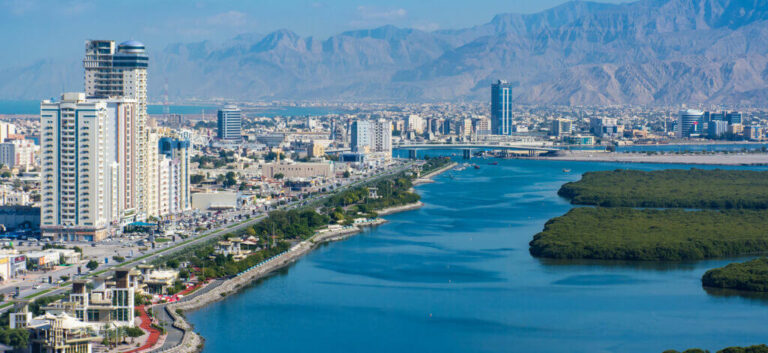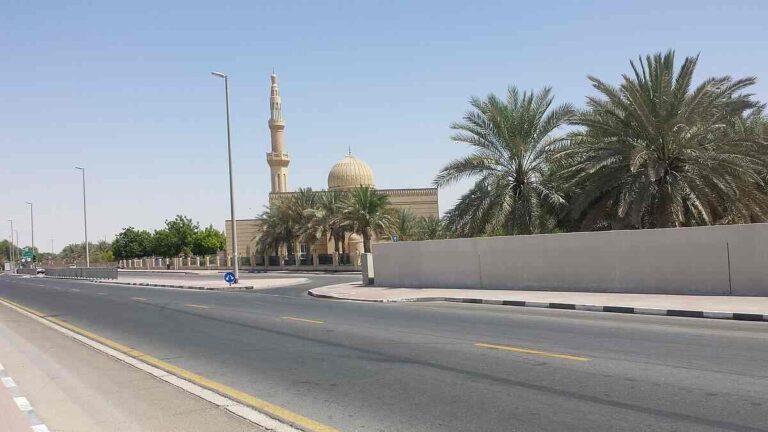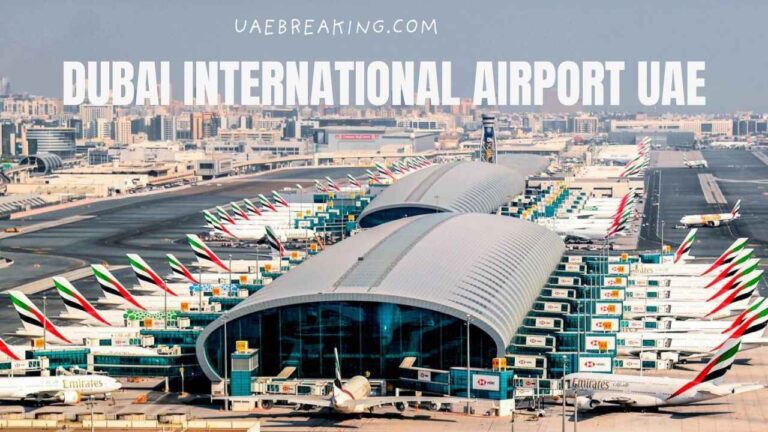Sonapur Dubai— The Hidden Backbone
When the world thinks of Dubai, images of glittering skyscrapers, futuristic architecture, luxury malls, and artificial islands immediately come to mind. Yet beyond the grandeur lies a quieter story—one that rarely features in travel guides but is deeply intertwined with the city’s success. This story belongs to Sonapur Dubai, a district that houses thousands of migrant laborers who built the very foundations of the emirate’s prosperity.
Known officially as Muhaisnah, Sonapur is often described as a “city within a city.” While Palm Jumeirah dazzles with its resorts and Downtown Dubai shines with its skyline, Sonapur reflects the grit, resilience, and sacrifices that make such marvels possible. To understand Dubai fully, one must understand Sonapur—its history, people, and future.
What’s in a Name? The Meaning of Sonapur
The name Sonapur originates from Hindi and Urdu, combining sona (gold) and pur (city). For many of its residents, it represents a land of opportunity—where hard work can turn into remittances, education for children, or a new home back in their villages. The irony, however, is unmistakable: life in Sonapur is far from golden. Instead, it is marked by modest housing, long work hours, and enduring sacrifice.
Over time, the term “Sonapur” has entered Dubai’s local lexicon. Mentioning it instantly evokes images of worker accommodations and labor communities. Although rarely used in official documents, it has become part of the city’s cultural vocabulary.
Geography and Urban Placement of Sonapur Dubai
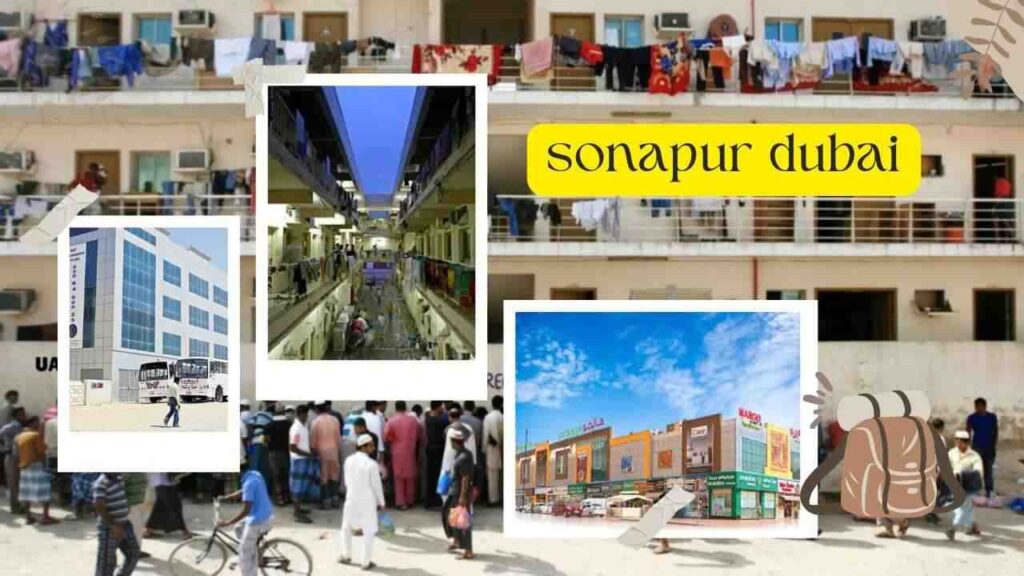
Sonapur sits on the eastern edge of Dubai, within Muhaisnah 2, 3, and 4, close to Al Qusais Industrial Area and along the Dubai–Sharjah border.
Nearby Landmarks:
- Dubai International Airport – a short drive away, reinforcing Sonapur’s strategic importance
- Al Qusais Industrial Area – home to factories, warehouses, and workshops employing many Sonapur residents
- Sharjah’s border zones – providing spillover housing and industrial connectivity
This location reflects Dubai’s deliberate urban planning: situating worker housing close to industrial hubs, but away from prime commercial and tourist areas.
The Rise of Sonapur Dubai— A Product of Dubai’s Boom
The early 2000s marked Dubai’s most ambitious construction era. Projects like Burj Khalifa, Dubai Metro, Mall of the Emirates, and Palm Jumeirah demanded a massive workforce. Migrants from India, Pakistan, Bangladesh, Nepal, and beyond arrived in droves, seeking opportunity.
To accommodate this influx, the government designated Muhaisnah as a labor housing zone. Companies built camps, and Sonapur quickly grew into one of the largest worker settlements in the region. What started as temporary prefabricated camps has now become a permanent district housing tens of thousands of laborers.
Life Inside Sonapur Dubai
Housing and Conditions
Workers typically share rooms with 6 to 12 occupants, equipped with bunk beds, basic storage, and shared kitchens. Washrooms are communal, and amenities vary depending on company provisions. While conditions have improved significantly in recent years due to government regulations, overcrowding and limited privacy remain pressing issues.
Daily Rhythm
- Early Morning: Long queues for company buses heading to construction sites and industrial zones
- Daytime: The area empties as residents disperse across Dubai’s economic landscape
- Evening: Streets and cafeterias fill with returning workers, conversations in dozens of languages, and the scent of affordable South Asian meals
Community and Culture in Sonapur Dubai
Despite hardships, Sonapur thrives on community spirit. Cricket matches on dusty fields, Bollywood movies on shared screens, and vibrant celebrations of Diwali, Eid, or national days keep cultural ties alive. Food stalls serve biryani, chapati, chai, and curries—comfort food that bridges the emotional distance from home.
Economic Importance of Sonapur Dubai
Dubai’s economy could not function without Sonapur. Its residents form the workforce powering:
- Construction – laborers building towers, bridges, and roads
- Industrial production – workers in factories, assembly lines, and logistics
- Service roles – cleaners, guards, drivers, and support staff across the city
Every iconic landmark, from Dubai Frame to Dubai Marina, owes its existence to workers who sleep in Sonapur. It is no exaggeration to say Sonapur is the invisible engine of Dubai’s transformation.
Past Challenges and Crises of Sonapur Dubai
Sonapur has not been without controversy. In 2012, several labor camps faced abrupt shutdowns, leaving residents without water or power. Many were relocated under difficult conditions to Sharjah. The incident drew criticism from international observers, highlighting the vulnerability of migrant workers.
Such episodes sparked debates on corporate accountability and labor rights, prompting authorities to tighten regulations and improve oversight.
Government Reforms and Current Improvements
Recognizing the essential role of its labor force, Dubai has introduced reforms over the last decade:
- Housing Standards – companies must comply with regulations on hygiene, space, and safety
- Healthcare Access – clinics and medical checks are mandated for workers
- Transport Services – safe buses must be provided for commuting
- Heat Break Laws – working hours restricted during extreme summer temperatures
These efforts are reshaping Sonapur from a makeshift labor hub into a regulated worker community. While gaps remain, progress is evident.
Sonapur Dubai in Popular Discourse
For many residents of Dubai, Sonapur is an invisible part of the city. It rarely appears in tourist promotions or glossy brochures. Yet in conversations about labor, equity, or urban development, Sonapur becomes central.
Internationally, it is often referenced in discussions of migrant labor conditions. Locally, it symbolizes the sacrifices of workers whose efforts underpin the UAE’s modern identity.
Fridays in Sonapur Dubai — A Different Pulse
If you visit Sonapur on a Friday, the atmosphere changes completely. With most workers off duty, the area becomes lively. Mosques overflow, cricket matches fill open spaces, small shops buzz with activity, and conversations spill into the streets late into the night.
This weekly rhythm highlights the resilience of the community. Despite long hours and modest living, Sonapur’s residents create joy, culture, and solidarity in the little time they have.
The Future of Sonapur Dubai
As Dubai transitions into new economic sectors like AI, technology, and green energy, the role of manual labor may shrink. Yet Sonapur will remain vital, both as housing and as a symbol.
Future Trends:
- Smart Worker Housing – modular units with better privacy, ventilation, and energy efficiency
- Healthcare & Wellness Focus – mental health, nutrition, and preventive care initiatives
- Skill Development Programs – training pathways to help workers transition to higher-skilled roles
- Urban Integration – reducing the isolation of Sonapur by integrating worker housing into Dubai’s broader urban plan
The UAE’s Vision 2031 emphasizes inclusivity and human welfare. Sonapur’s transformation will be a crucial test of these values.
Sonapur vs. The Rest of Dubai — A Tale of Two Cities
Dubai is often compared to global powerhouses like Singapore, New York, or London. But unlike those cities, its growth has been incredibly rapid. The contrast between glittering skyscrapers and humble labor camps is sharper here.
- Dubai’s outward image: luxury, innovation, and spectacle
- Dubai’s inward reality: resilience, labor, and sacrifice in places like Sonapur
Understanding both narratives offers a fuller picture of the city’s character.
Human Stories — The Beating Heart of Sonapur
Beyond numbers, Sonapur is about individuals. A mason from Kerala saving for his children’s college. A driver from Punjab sending money for his sister’s wedding. A welder from Bangladesh building a home back in his village.
Each story reflects determination. For these workers, Sonapur is a temporary station in a longer journey—a place of sacrifice but also of hope. Their contributions may not always be visible, but they are written into every bridge, metro line, and tower that defines Dubai’s skyline.
Internal Connections Within Dubai
Sonapur doesn’t exist in isolation. Its residents are deeply connected to:
- Dubai Metro – many use it daily to reach industrial hubs
- Dubai International Airport – employing thousands of ground staff
- Al Khail Road & major highways – critical for commuting to work sites
- Construction megaprojects – where Sonapur’s workforce remains indispensable
These connections show that while Sonapur may appear peripheral on maps, it is central to Dubai’s ecosystem.
Frequently Asked Questions (FAQ)
What is Sonapur in Dubai?
Sonapur is the informal name for labor housing districts in Muhaisnah, Dubai, where thousands of migrant workers live.
Why is it called Sonapur?
It means “City of Gold” in Hindi, symbolizing the hopes of workers, though life here is modest.
Where is Sonapur located?
On Dubai’s eastern edge, near Al Qusais Industrial Area and the Dubai–Sharjah border.
Who lives in Sonapur?
Primarily migrant laborers from South Asia, employed in construction, logistics, factories, and services.
What are living conditions like?
Conditions vary, but reforms have improved housing, sanitation, and healthcare compared to the past.
Can tourists visit Sonapur?
It is not a tourist attraction. It is primarily a residential area for workers.
What role does Sonapur play in Dubai’s economy?
It houses the workforce that built Dubai’s major infrastructure and continues to sustain its industries.
Is Sonapur changing?
Yes. Government reforms, corporate accountability, and new housing models are transforming it into a more regulated, humane worker community.
Conclusion — The Unseen City of Gold
Sonapur may not be featured in Dubai’s tourism campaigns, but it is as essential to the city as Burj Khalifa or Palm Jumeirah. It represents the invisible backbone of Dubai—the labor, dreams, and sacrifices of thousands who left home to build a new life and, in turn, build a new city.
To know Dubai is to know Sonapur. It is not the city of gold promised in its name, but it is the city that laid the foundation for Dubai’s golden future. And as Dubai looks toward a future defined by innovation and inclusivity, the transformation of Sonapur will reveal much about how the emirate values every hand that shaped its success.
- XLine Dubai Marina, UAE - October 2, 2025
- Al Maktoum International Airport, Dubai, UAE - October 1, 2025
- Dubai International Airport, UAE - September 30, 2025
